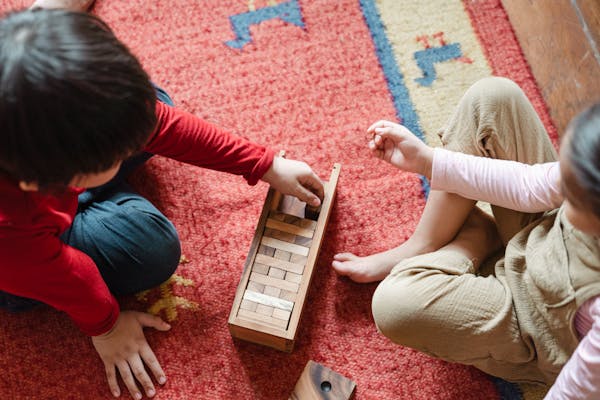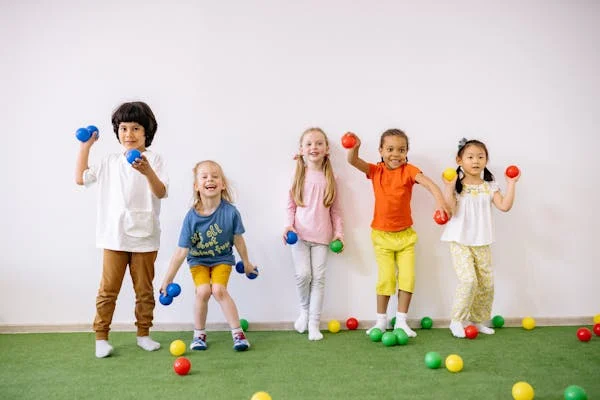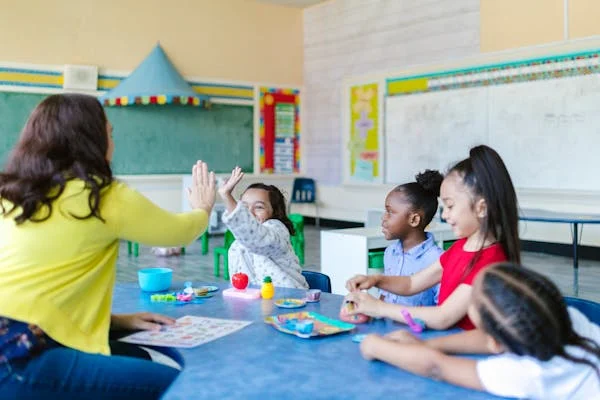Introduction
It is impossible to overestimate the importance of classic kindergarten games in today’s fast-paced environment where technology frequently takes center stage. These games are not just enjoyable, but they also have a significant impact on kids’ growth by helping them acquire critical abilities that set them up for success in the future.
The game Kindergarten is an ethereal puzzle adventure. You take on the role of a student at an oddball school. The instructor is attempting to part with her students. It’s common to see the janitor mopping up blood. The cafeteria is continuously serving the same muck.
How long is kindergarten game?
about 3½ Hours
With an emphasis on the primary goals, kindergarten lasts roughly three quarters of an hour. It will probably take you six hours to complete a game if you’re the kind of player that likes to see everything.
How to Teach Sight Words to Kindergarten Kids?
1. Introduce Sight Words to Your Child at a Young Age.
2. Begin by making a short list of words.
3. Increase the Interactivity of Read-Aloud.
4. Avoid Introducing Words That Are Visually Similar Together.
5. Make Use of All Their Senses.
6. Use Engaging and Fun Worksheets to Learn Important Sight Words.
What sight words are used in kindergarten?
Examples of sight words by grade level

• Kindergarten: was, what, with, he, she, do, have, and be.
• First grade: of, then, when, her, his, could, from, and after.
• Second grade: which, write, goes, right, because, been, before, and so on.
Benefits of Kindergarten Games
Developmental Advantages: There are numerous developmental advantages of playing games in kindergarten. These games offer a comprehensive approach to learning, fostering cognitive capacities as well as improving motor capabilities.
Social Skills Improvement: Participating in group activities promotes communication, cooperation, and social connection. Kindergarten activities give kids the chance to practice empathy for others and learn the value of cooperation.
Cognitive Enhancemen: tProblem-solving, critical thinking, and decision-making are crucial cognitive abilities that are incorporated into many kindergarten games. Play helps youngsters build resilience and adaptability—two essential skills for overcoming obstacles in life.
Emotional Regulation: Children learn how to control their emotions, deal with frustration, and control their conduct through games. Kindergarten games offer a fun, safe environment for children to express their emotions and grow.
Types of Kindergarten Games
Physical Games
Playing physical games improves coordination, gross motor abilities, and physical fitness. These activities, which frequently entail leaping, running, and balancing, give kids a way to vent off steam and keep active.
Educational Games
Playing educational games makes learning enjoyable and interesting by fusing play with learning. These entertaining academic idea reinforcement activities range from letter puzzles to counting games.
Creative Activities
Artistic pursuits, including crafting or pretend play, foster individuality and inventiveness. These activities foster a child’s creativity, inventiveness, and ability to solve problems.
Popular Kindergarten Games

Musical ChairsMusical chairs, a timeless favorite, promotes fast thinking, physical agility, and listening comprehension. Children will be captivated by this straightforward yet thrilling game for hours on end.
Simon Says
Playing the game Simon Says helps you improve your listening comprehension and attention to detail. The fun commands present a challenge for kids to respond promptly and precisely.
Goose Duck Duck
Children take turns chasing one other around the circle in this energetic game that encourages cooperation and social connection. It promotes teamwork, spontaneity, and humor.
Dancing Freeze
Children are challenged to dance freely yet freezing when the music stops in “Freeze Dance,” a movement and music combination. It’s a great method to promote expressive rhythm and creativity.
Red Light, Green Light
Red Light, Green Light is a speed-control game that teaches kids to stop and move when instructed. It improves one’s capacity for self-control, listening comprehension, and rule compliance.
Ring Around the Rosie
Children can practice coordination and cooperation by holding hands and circling around in the age-old favorite Ring Around the Rosie. It’s a fun game that encourages cooperation and social bonding.

Bean Bag Toss
Bean Bag A fun outdoor activity that enhances aim and hand-eye coordination is toss. Tossing bean bags into targets is a fun challenge for kids that helps them focus and be more precise.
Hide and Seek
Playing the timeless game of hide and seek helps improve spatial awareness and inventiveness. Children learn to solve problems when they plan their hiding places and communicate with others while searching.
How to Choose the Right Kindergarten Games
It’s important to take into account a number of aspects while choosing kindergarten games to make sure they fit your child’s age, interests, and developmental stage.
Age Suitability
Select games that correspond with your child’s growth milestones and age. When choosing games, take into account their physical capabilities, attention span, and emotional development.
Relevance to Education
Seek for games that support reading, numeracy, or problem-solving abilities as examples of educational benefits. For the growth of young children, games that combine learning objectives in an enjoyable and captivating manner are perfect.
Safety Points to Remember
When selecting kindergarten games, especially for strenuous activities, put safety first. Make sure there is enough supervision and that the games are played in a risk-free atmosphere to avoid mishaps.
Incorporating Kindergarten Games at Home
Including kindergarten games in the house is a great method to promote play-based learning and improve family dynamics.
Setting up Play Areas
Provide a room in your house for play activities and stock it with materials, games, and toys that are suitable for the child’s age. Establish an environment that sparks curiosity, inventiveness, and creativity.
Parental Involvement
Provide a room in your house for play activities and stock it with materials, games, and toys that are suitable for the child’s age. Establish an environment that sparks curiosity, inventiveness, and creativity.
Learning Through Play
Engage in games with your kids, give them advice, and show them support to get them playing. Your support and presence provide your child confidence and security as they explore and learn.
Learning via Play Recognize play’s potential as an important instrument for development and learning. Play games to help teach social skills, reinforce academic material, and encourage good behavior. Promote unstructured play that enables kids to investigate, try new things, and learn.
FAQs about Kindergarten Games
Are all kindergarten games educational?
Yes, most kindergarten games are designed with educational objectives in mind, aiming to promote learning and development in young children while making the experience enjoyable and engaging.
How can I assess the educational value of a kindergarten game?
When evaluating the educational value of a kindergarten game, consider factors such as its alignment with curriculum standards, the skills it targets, and the opportunities it provides for active learning and exploration.
Can kindergarten games be played solo or are they better suited for group play?
Kindergarten games can be adapted for solo or group play, depending on the game’s design and objectives. While some games encourage independent exploration and learning, others are designed for collaborative play, promoting teamwork and social interaction.
Are there any risks associated with excessive screen time when using digital kindergarten games?
While digital kindergarten games can offer valuable learning experiences, excessive screen time can have negative effects on children’s health and development. It’s essential to balance screen time with other activities such as outdoor play, social interaction, and hands-on learning experiences.
How can I encourage reluctant learners to engage with kindergarten games?
To encourage reluctant learners, make learning fun and interactive by choosing games that align with their interests and preferences. Offer encouragement and support, celebrate small victories, and provide opportunities for success to boost confidence and motivation.
